My family eats turkey for Christmas (even last year when I made the goose, we still had a back-up turkey), so this is what I am going to show you how to prep step-by-step for your holiday meal. Breaking the bird down and cooking the breasts separately from the rest of the bird works better, because the white meat (found in the breasts) finishes cooking at a lower internal temperature than the dark meat. Cooking them both together the traditional way overcooks the breasts. By cutting the breasts off and pan searing them you'll get the best flavor from your white meat without overcooking it, and then roasting the rest of the bird until it reaches its proper temperature will ensure that your entire bird is delicious. Also, it cooks a lot faster this way.
I'll add pictures to this post once I start prepping this turkey, since it is currently thawing.
You will need: one thawed turkey (or other whole bird of your choice); a few sharp knives; kitchen scissors; salt and pepper; plastic wrap; Ziploc bags; paper towels; salt and pepper; salt pork; vegetable oil
Note: This should be done about one to two days before you plan on cooking the bird, but doing this last minute probably won't make much of a difference.
Step One: Remove the Giblets and Clean
This part is fairly obvious. Just open the bag, pull the nasty skin open and remove all the stuff the factory pushes inside the bird (hopefully, it's neatly bagged up for you, otherwise you're stuck digging around a turkey's cavity looking for that last kidney). I'd suggest saving the liver and using it in your homemade stuffing, and saving the rest of the giblets to make stock with. Rinse the cavity and the outside of the bird and dry with some paper towels. Cut off the excess skin with a sharp knife or scissors.Step Two: Remove the Breasts
Place the bird breast side up on a butcher block or large cutting board. Feel your bird to determine exactly where the sternum is. Take your sharp knife, and cut a line all the way down the sternum.You will want to cut each breast off separately. To do this, use a sharp carving or butcher knife and cut the entire left/right breast off by keeping your knife as close to the bone as possible.
Once it's cut along the bone, remove the breast by cutting the skin, fat, cartilage, etc. that is keeping it in place. Dry this piece with a paper towel, and place skin side down on plastic wrap. Repeat with the other side. Salt and pepper the breasts, wrap them up, and put them in a zip lock bag. Refrigerate.
If you dislike the skin, take the opportunity now to cut it off. I find the best way to remove bird skin is to start cutting with a small, sharp knife keeping the knife slightly angled toward the skin. Once it is started, I think it is easier to just remove the bits keeping the skin on with a pair of scissors. If you do remove the skin, only pan sear each side for two to three minutes.
Step Three: Break the Bird's Back
Remove the wings by twisting them until the bone dislocates, then cut them off.Turn the bird over so the spine is facing up. Break the bird's back. Believe me, this sounds a lot easier than it actually is. You'll have to struggle with it for awhile, unless you are incredibly strong. It's helpful to have a friend hold one end while you bend the spine. Using a sharp knife, position it in a small space where the break is, and start cutting or pushing away. You can either discard the top carcass after reserving the wings, or save it to roast with the legs (as Chris Kimball recommends).
Note: This turkey's back was actually really easy to break, maybe you'll get lucky too.
Step Four: Prep Bottom Half
Trim excess skin and fat away from the remaining leg section. Using a small, sharp knife, score the skin in a quarter inch cross-hatch, being extremely careful to not cut the meat, unless your turkey is extremely lean. Salt and pepper, and wrap this section in plastic wrap. Refrigerate.Your bird is now broken down, and ready to cook in a day or two.
Remember to disinfect your work surface with bleach.
Step Five: Roast the Leg Section
Preheat oven to 325 or 350 degrees Fahrenheit, depending on what temperature was recommended on the package your bird came in. You may want to weigh your leg section in order to determine how long the bird will take to cook. (In my experience and using my crappy oven, the leg section of a 12-15 pound bird should only take about 2.5 hours, the leg section of a 5 pound bird should only take about 30-45 minutes). Put roughly one cup of water in the bottom of your roasting pan, and put the leg section on top (if you reserved the carcass, place the legs on top of the carcass). Place your salt pork on top; alternatively you can use bacon strips if you can't find salt pork. Place in the oven. Remove the salt pork once it is stiff and beginning to brown; this should occur after about 30 minutes. Continue roasting until the legs reach 180 degrees Fahrenheit. Remove from oven.Reduce oven temperature to 250 degrees Fahrenheit.
Step Six: Sear and Roast the Breasts
In a large, oven proof skillet (cast-iron seems to work best), heat about a teaspoon of vegetable oil on medium-high heat for about three minutes. While this is heating, pat your breasts dry with paper towels, and put on a long-sleeved shirt. Once the oil is heated, place the breasts in the pan, skin side down. Cook until the skin is golden brown, then flip over and cook the other side for a few minutes (two to three is all that is needed). Don't worry about the breast's internal temperature yet.After you finish searing, place the entire skillet in the pre-heated oven. Cook for roughly 15-25 minutes (this will be a lot shorter for a very small bird), or until the internal temperature reaches 140 degrees Fahrenheit (some people say 150 degrees). Remove from the oven, and let the breasts rest on a wire rack for 10 minutes. If you feel like the legs have gotten a little cold by now, let them warm in the oven at a low temperature for just a few minutes. All meat should have time to rest before slicing.
Remember that meat continues cooking once removed from the oven for about 5-10 degrees, so if you take the temperature and it's a few degrees below the recommended temperature, it is probably alright to remove from the oven, because it will reach that temperature while it is resting.
Now all you need to do is slice the breasts and legs into serving size pieces. Enjoy!
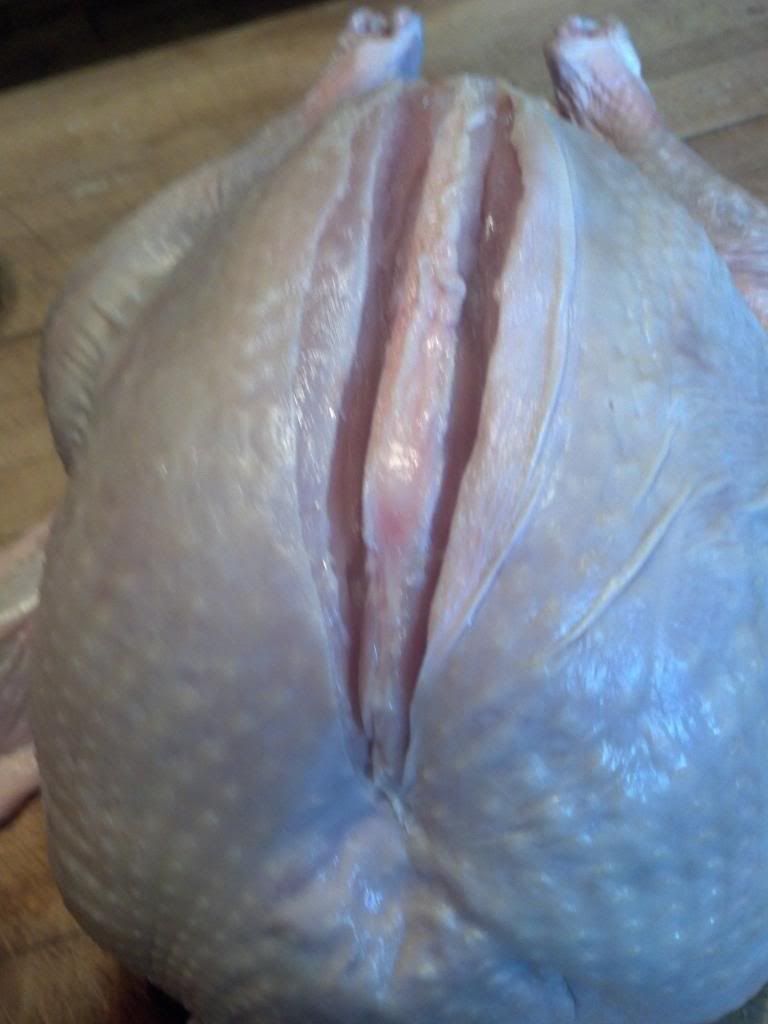

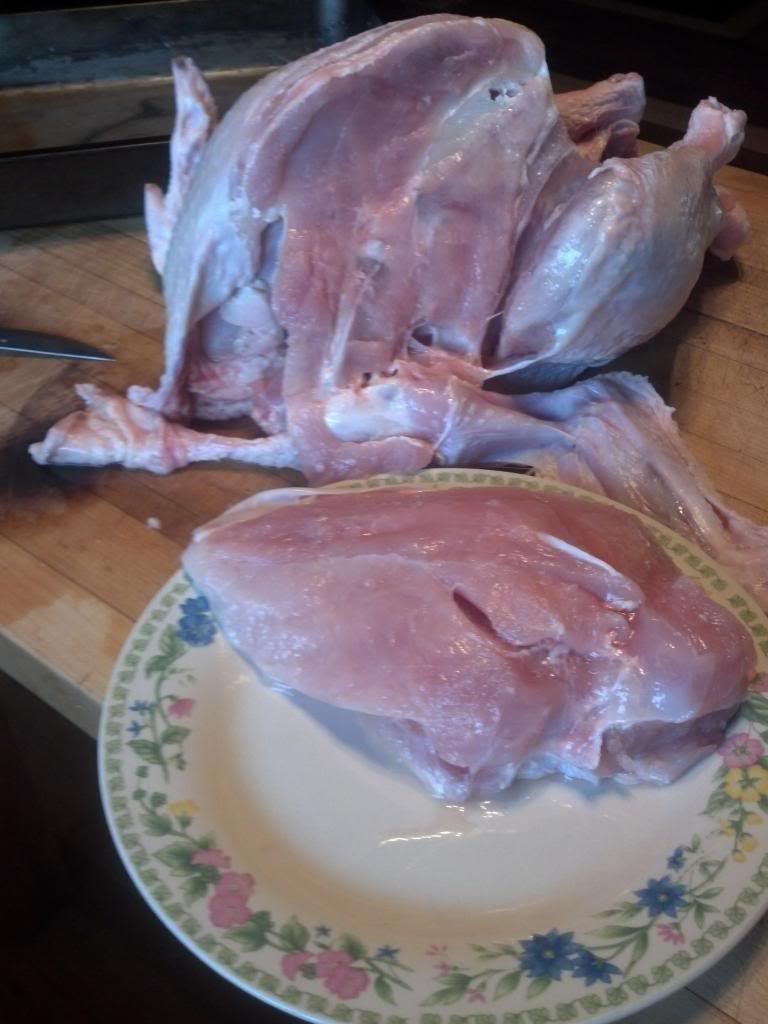
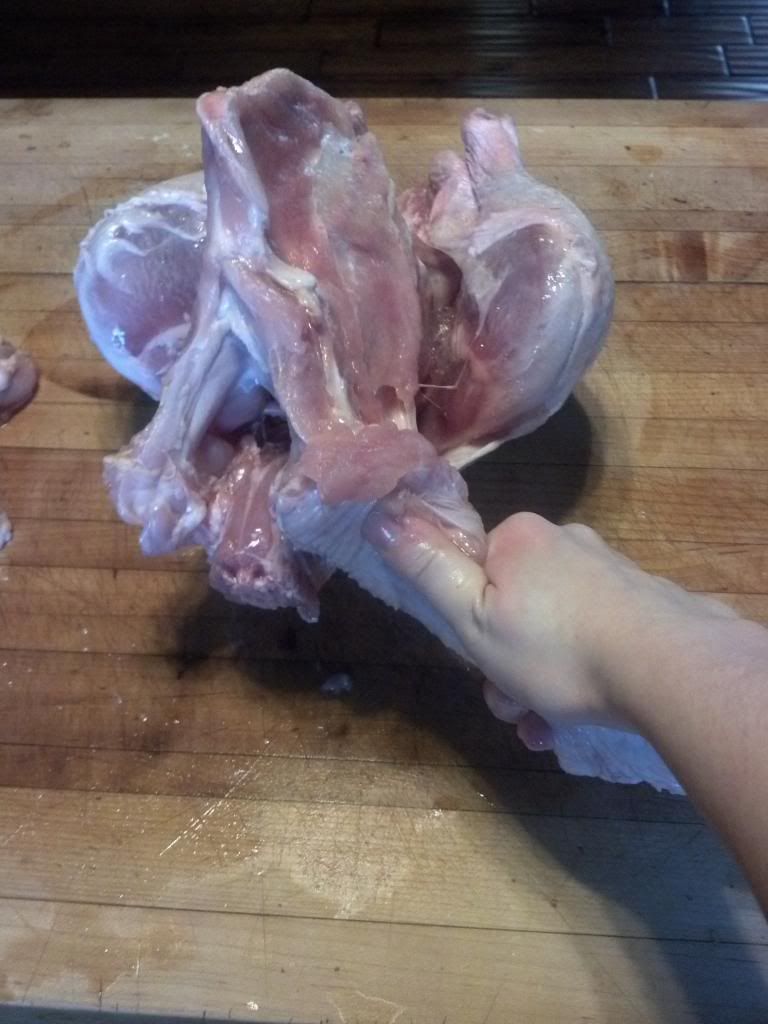
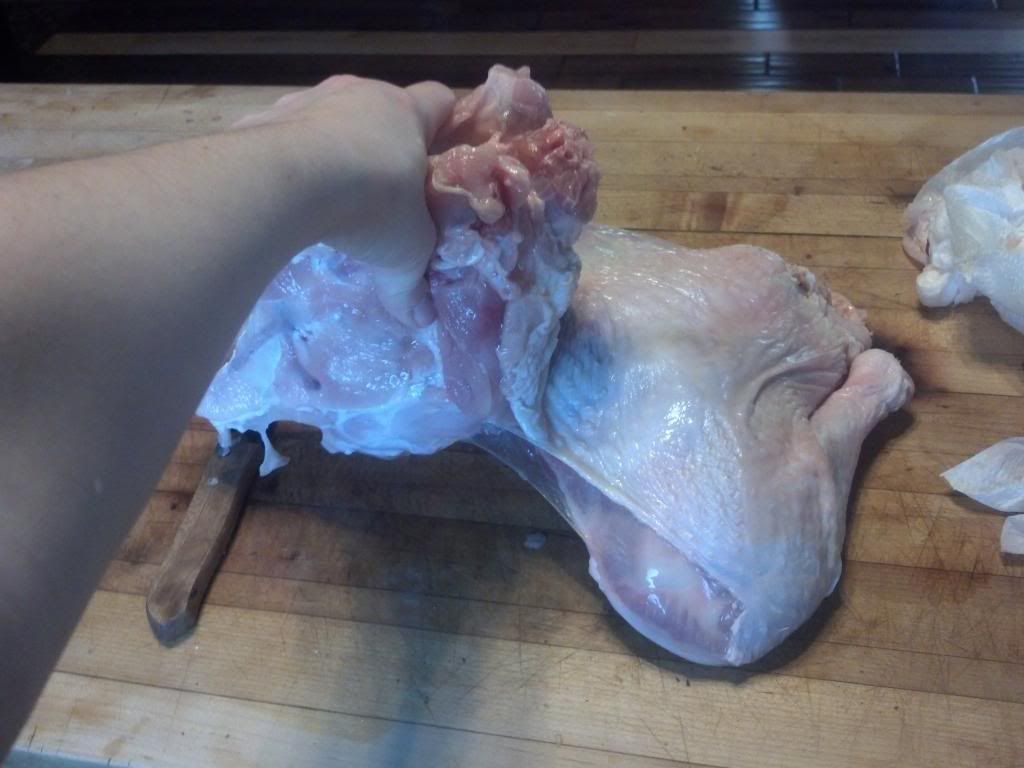
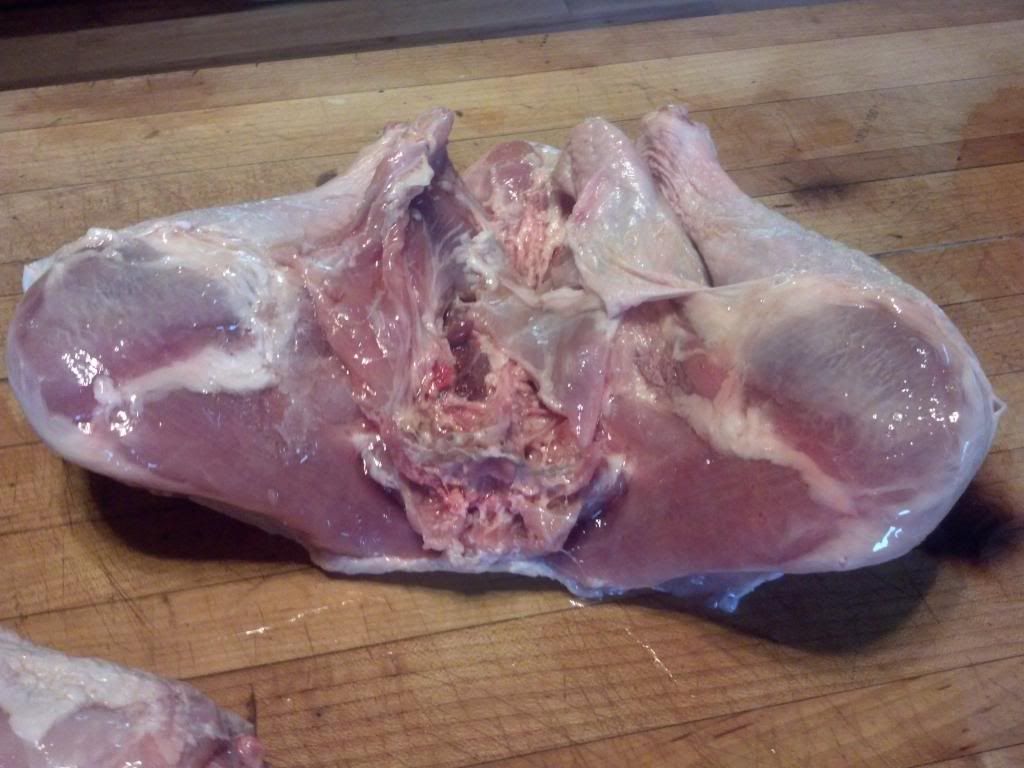

No comments:
Post a Comment